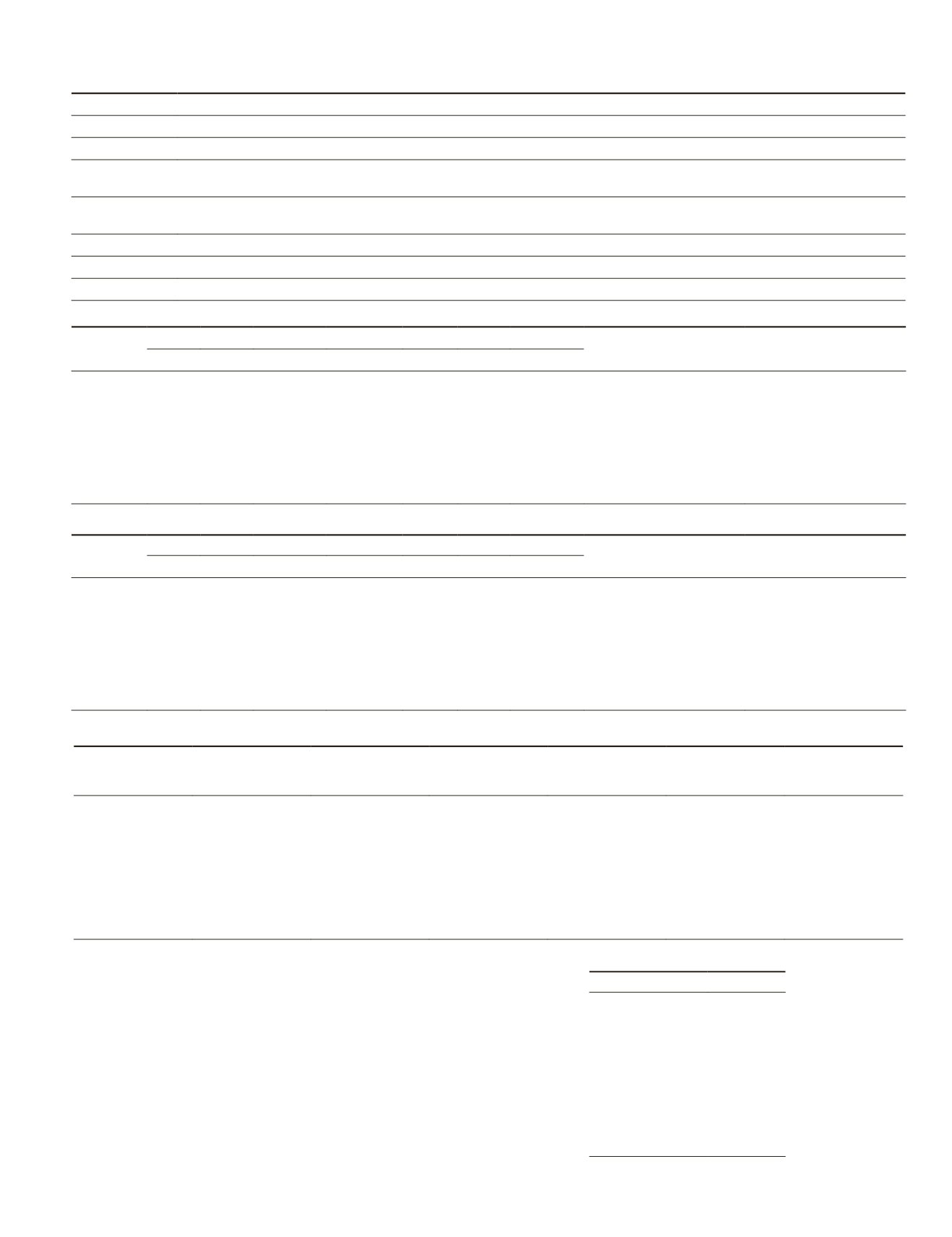
T
able
3. L
and
C
over
C
lassification
S
cheme
Land cover class Description
Grass
Areas dominated by graminoid or herbaceous vegetation, generally greater than 80% of the total vegetation
Farmland
Areas used for crop cultivation, both annuals and perennials
Forest
Areas dominated by trees generally greater than 3 m tall and greater than 20 percent of total vegetation cover; includes
deciduous forest land, evergreen forest land, and mixed forest land
Town
Residential, commercial services, industrial, transportation, communications, industrial and commercial, mixed urban or
built-up land, other urban or built-up land
Water
Permanent open water, lakes, reservoirs, streams, bays and estuaries
Mine
Areas that have undergone mining or extraction activities
Bare land
Lands with exposed soil, sand, rocks, and never has more than 10% vegetated cover during any time of the year.
T
able
4. C
lassification
A
ccuracy
A
ssessment
for
the
2010 D
ataset
Classified
Reference
Producer accuracy/% User accuracy/%
Mine Town Bareland Farmland Water Grass
Forest
Mine
57
1
3
0
1
0
0
95.00
91.94
Town
2
55
0
1
0
0
2
91.67
91.67
Bareland
0
1
47
2
1
1
2
90.38
87.04
Farmland
1
1
0
84
0
8
5
85.71
84.85
Water
0
0
0
3
60
0
0
95.24
95.24
Grass
0
1
2
4
1
123
6
88.49
89.78
Forest
0
1
0
4
0
7
276
94.85
95.83
T
able
5. C
lassification
A
ccuracy
A
ssessment
for
the
2001 D
ataset
Classified
Reference
Producer accuracy/% User accuracy/%
Mine Town Bareland Farmland Water Grass
Forest
Mine
47
0
0
0
0
3
0
100.00
94.00
Town
0
48
1
0
0
1
0
82.76
96.00
Bareland
0
5
42
0
0
5
0
95.45
80.77
Farmland 0
3
0
45
0
1
0
86.54
91.84
Water
0
1
1
3
44
3
0
93.62
94.62
Grass
0
0
0
0
1
48
1
76.19
96.00
Forest
0
1
0
4
2
2
41
97.62
82.00
T
able
6. T
otal
A
rea
, P
atch
Q
uantities
and
A
verage
P
atch
A
reas
for
each
C
lass
class
Total area of
classes in 2001
(km
2
)
Total area of
classes in 2010
(km
2
)
Number of
patches in 2001
Number of
patches in 2010
average patch
area in 2001/
(10
-2
km
2
)
average patch
area in 2010/
(10
-2
km
2
)
Mine
2.1
7.9
191
158
1.1
5.0
Town
2.5
4.7
168
179
1.5
2.6
Bareland
0.1
1.0
24
43
0.3
2.4
Farmland
28.9
26.7
1090
1096
2.7
2.4
Water
0.6
0.6
35
51
1.6
1.2
Grass
51.9
52.2
5908
5841
0.9
0.9
Forest
137.3
130.1
2400
2262
5.7
5.8
T
able
7. M
ining
A
rea
C
hange
D
ata
Class change
area/km
2
Bare land-Mine
0.0
Farmland-Mine
0.0
Water-Mine
0.0
Grass-Mine
0.0
Forest-Mine
6.4
Mine-Forest
0.3
Mine-Grass
0.3
Mine-Farmland
0.0
accounts for only 14.3 percent of the total stone mining area;
however mine dumping and tailing areas compose the major-
ity of this area. This serves as a remarkable characteristic that
is distinct from other mining regions, where digging areas
typically cover a larger proportion of the mining area.
Table 7 shows that all newly expanded stone mine areas
were converted from forest and that the occupied forest area
covered 6.4 km
2
. From 2001 to 2010, reclaimed land covered
only 0.6 km
2
, accounting for less than 10 percent of the mine
growth area. Of the reclaimed land forest area covered only
0.3 km
2
. Forests, and especially natural forests, are essential
to maintaining ecological balance and biological diversity.
Forest losses due to mining activities may challenge the
PHOTOGRAMMETRIC ENGINEERING & REMOTE SENSING
September 2015
749


